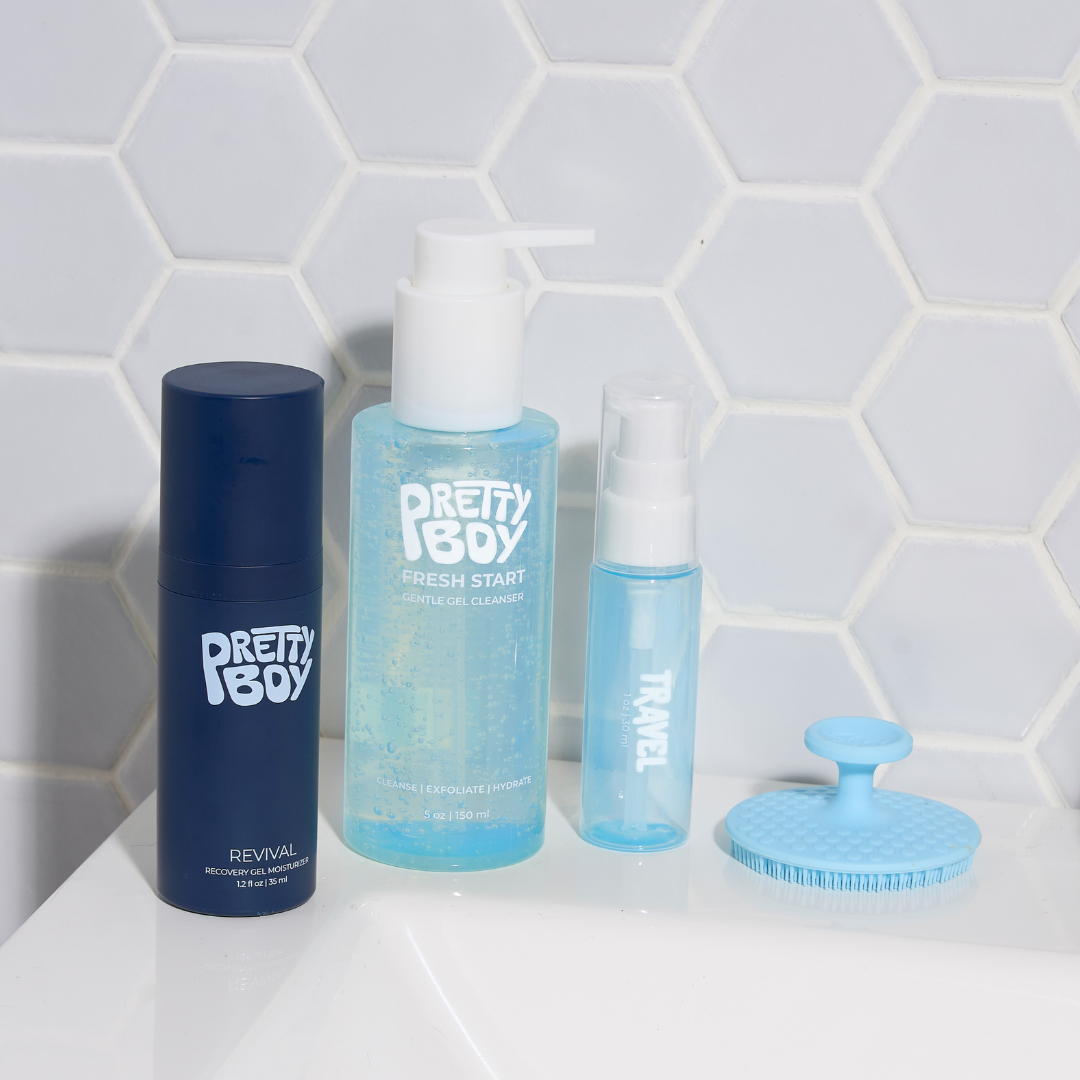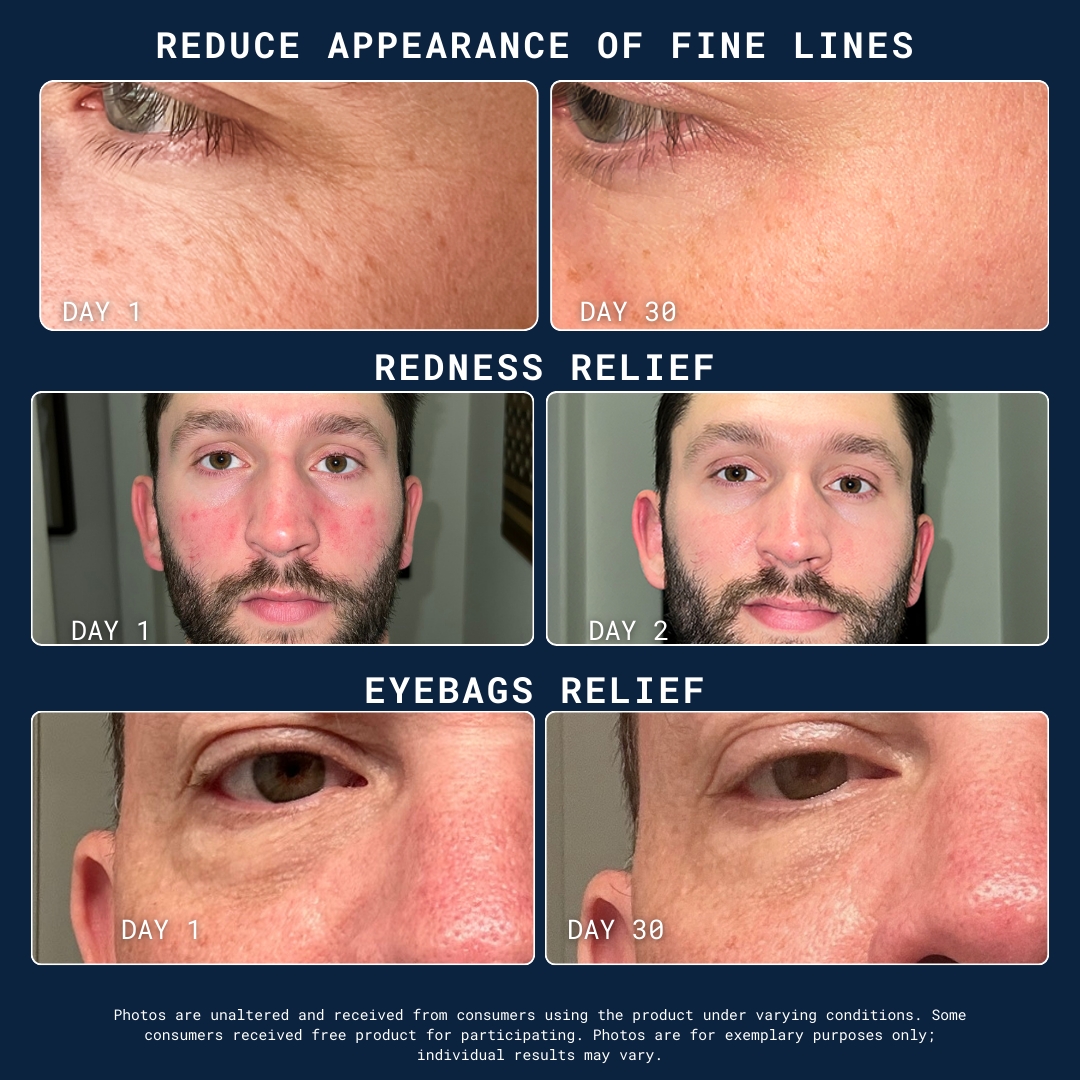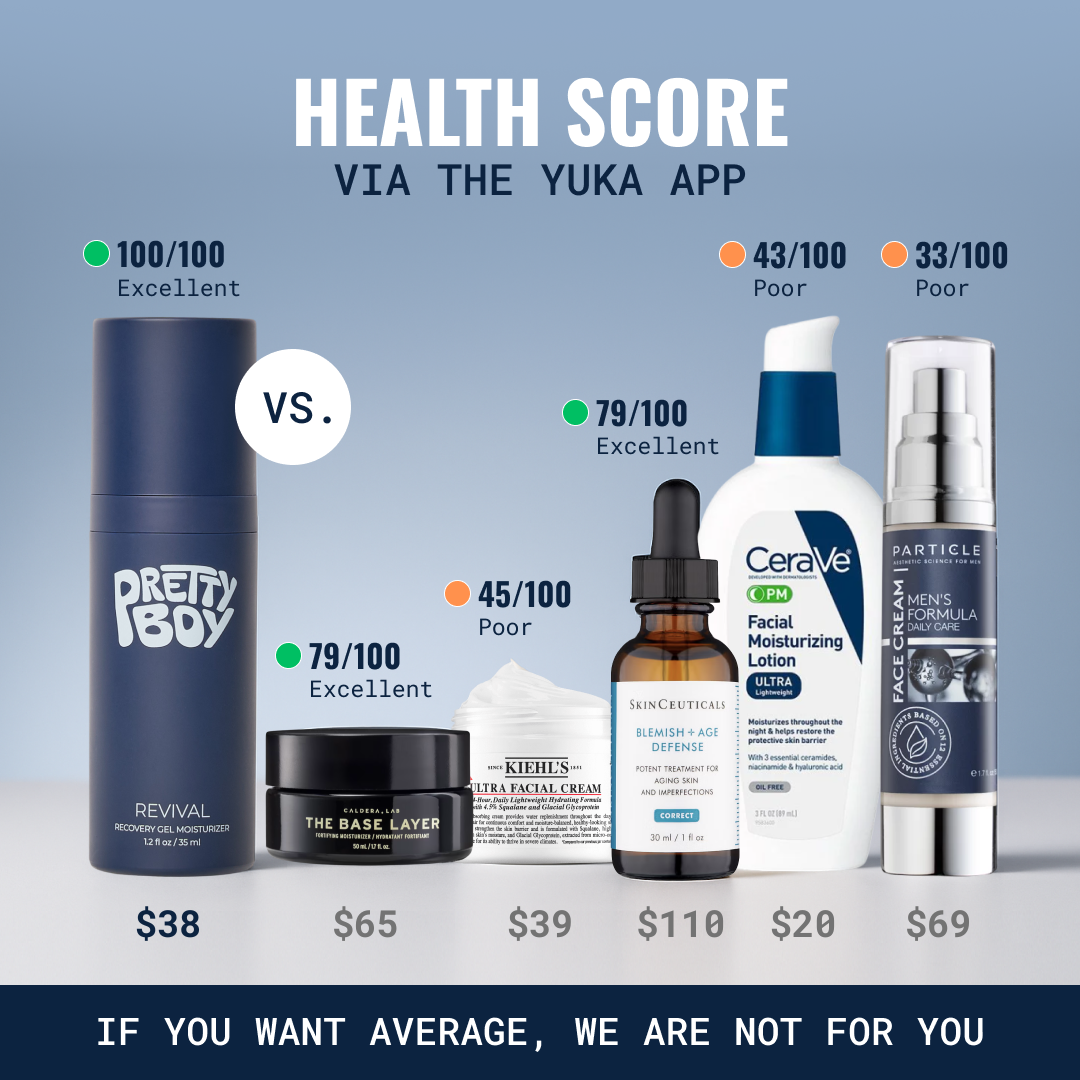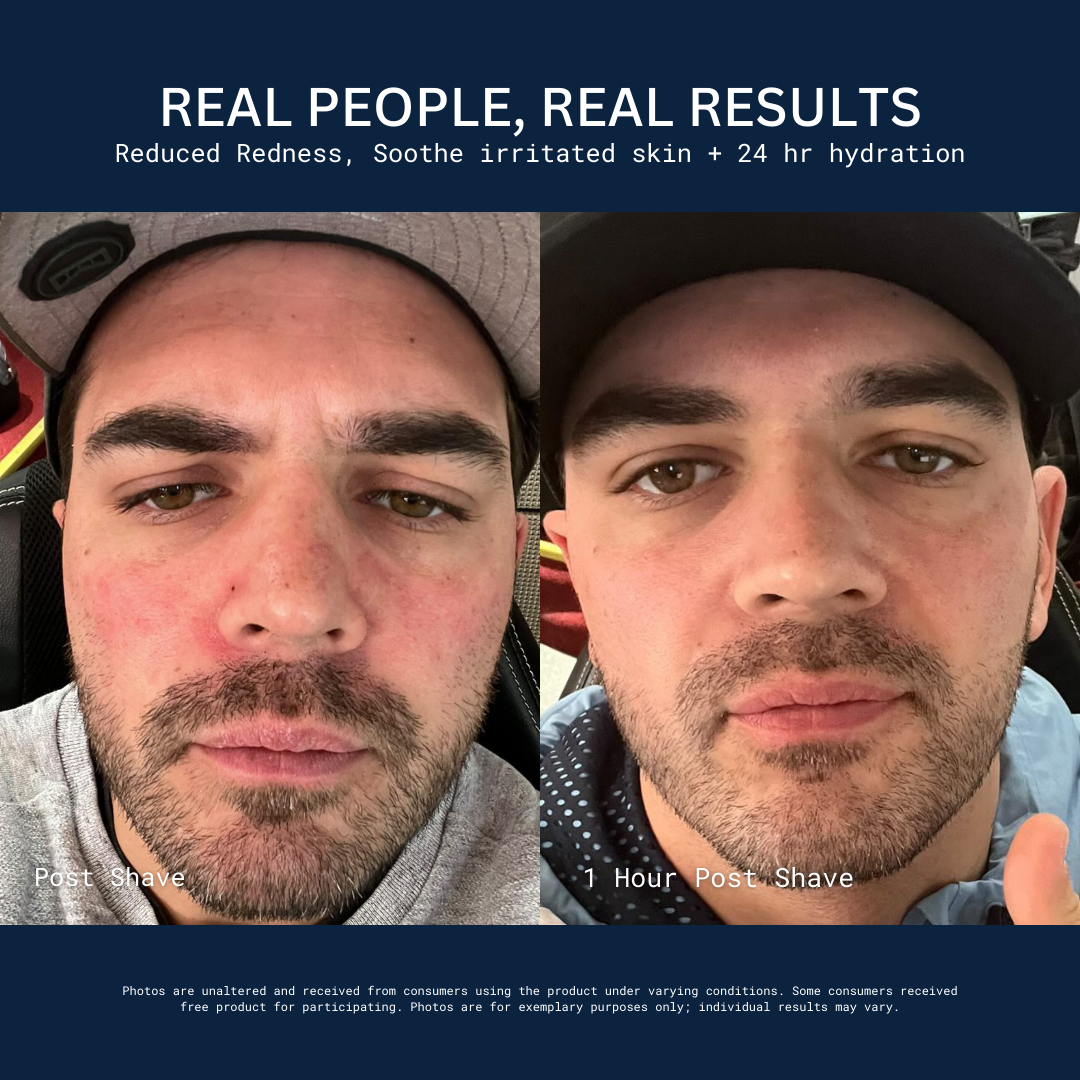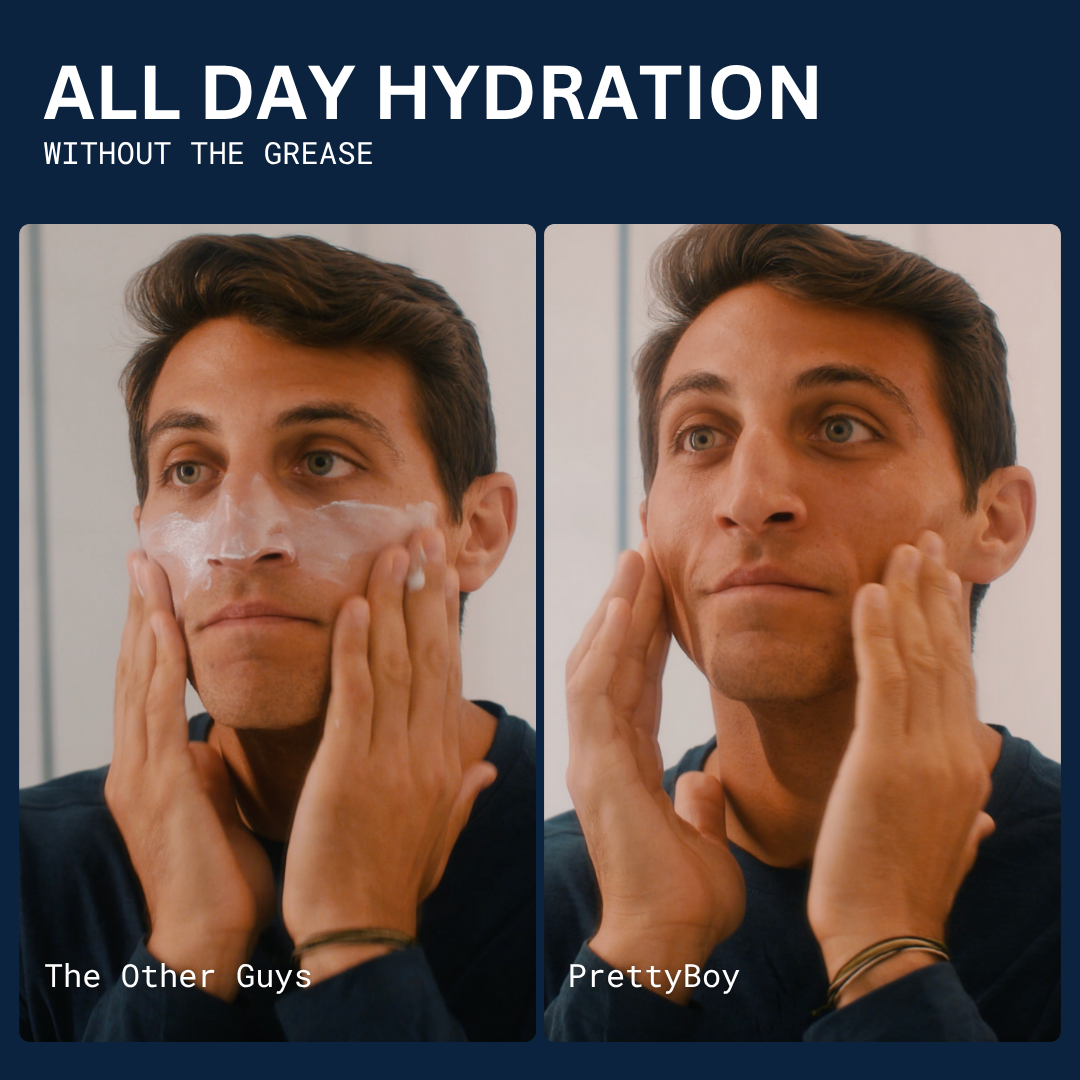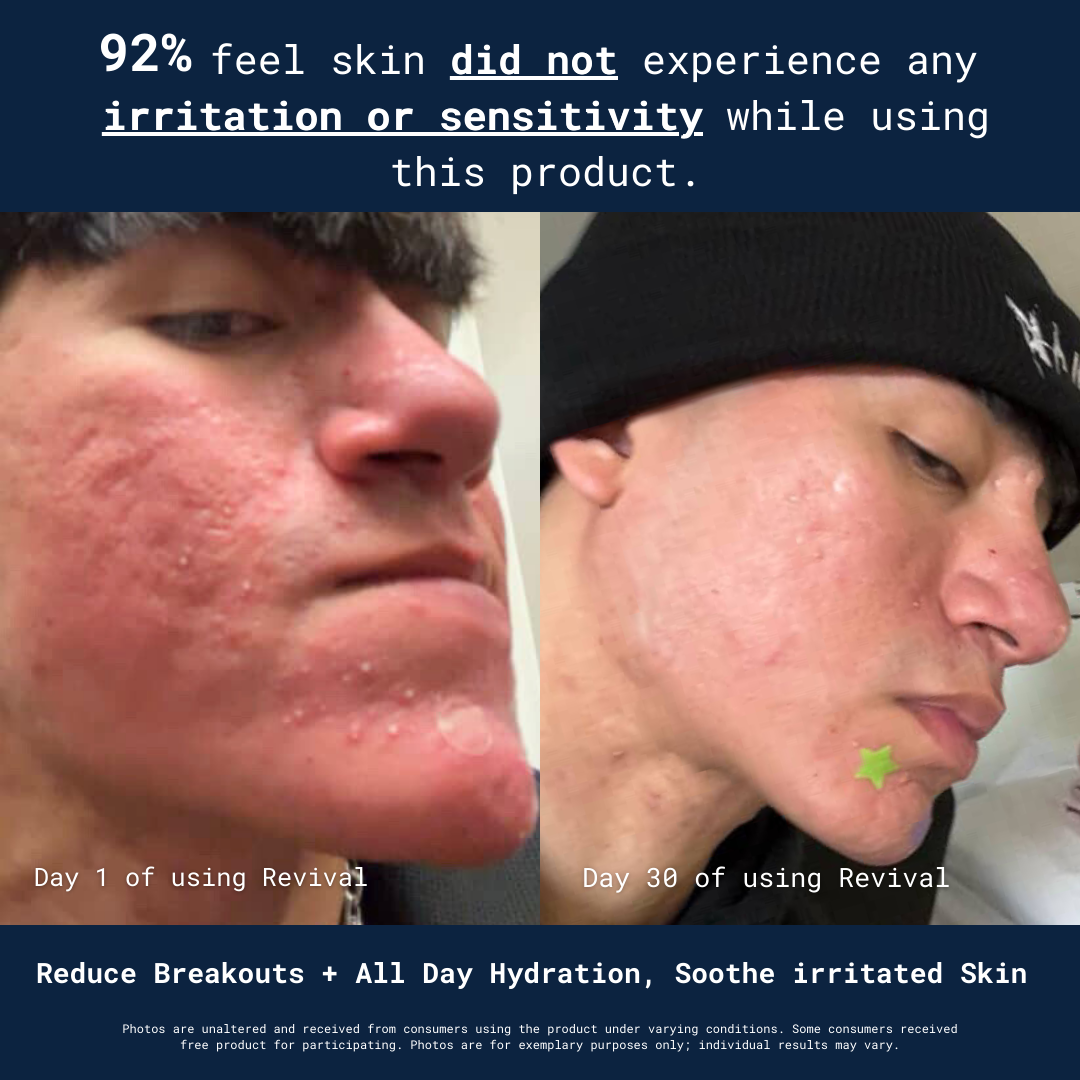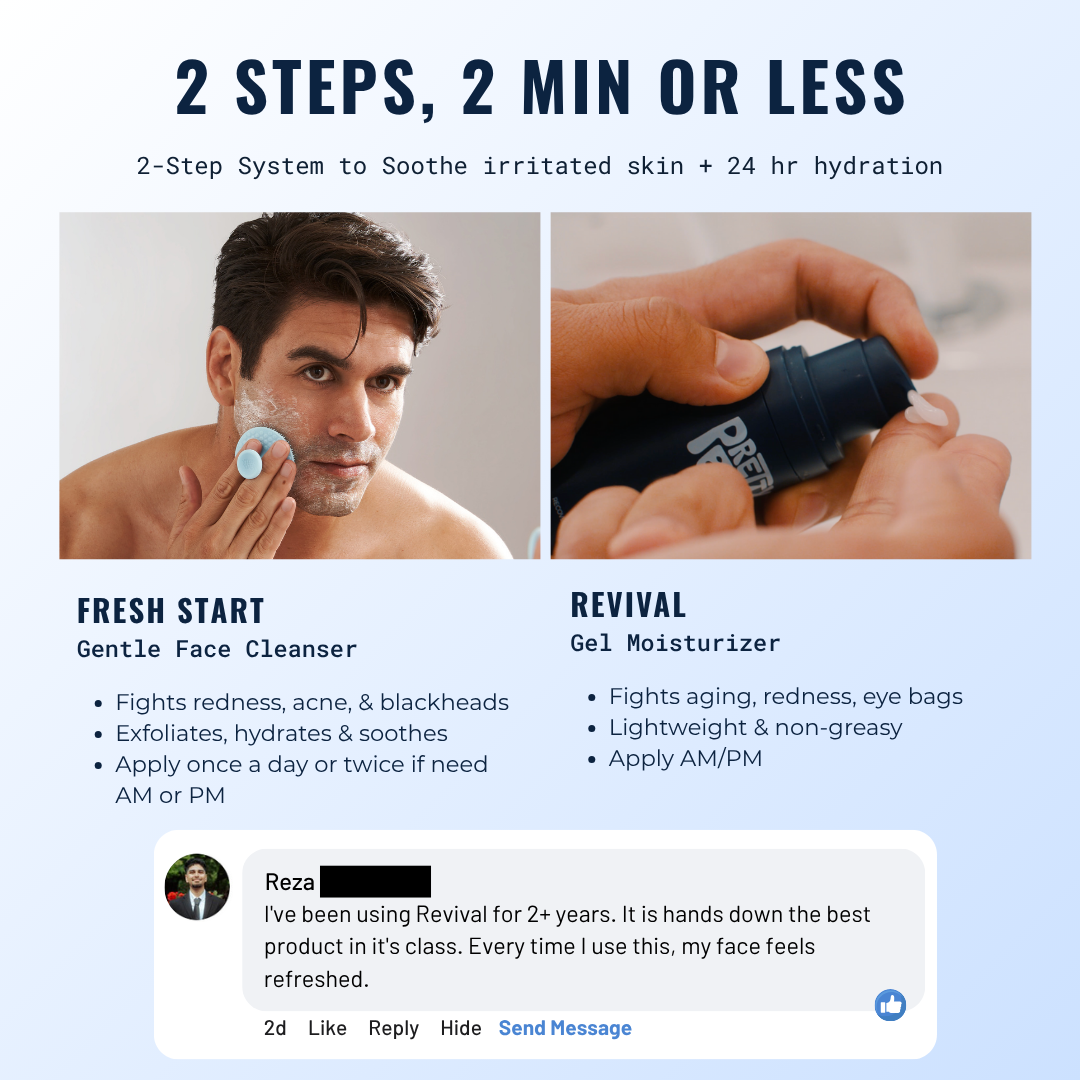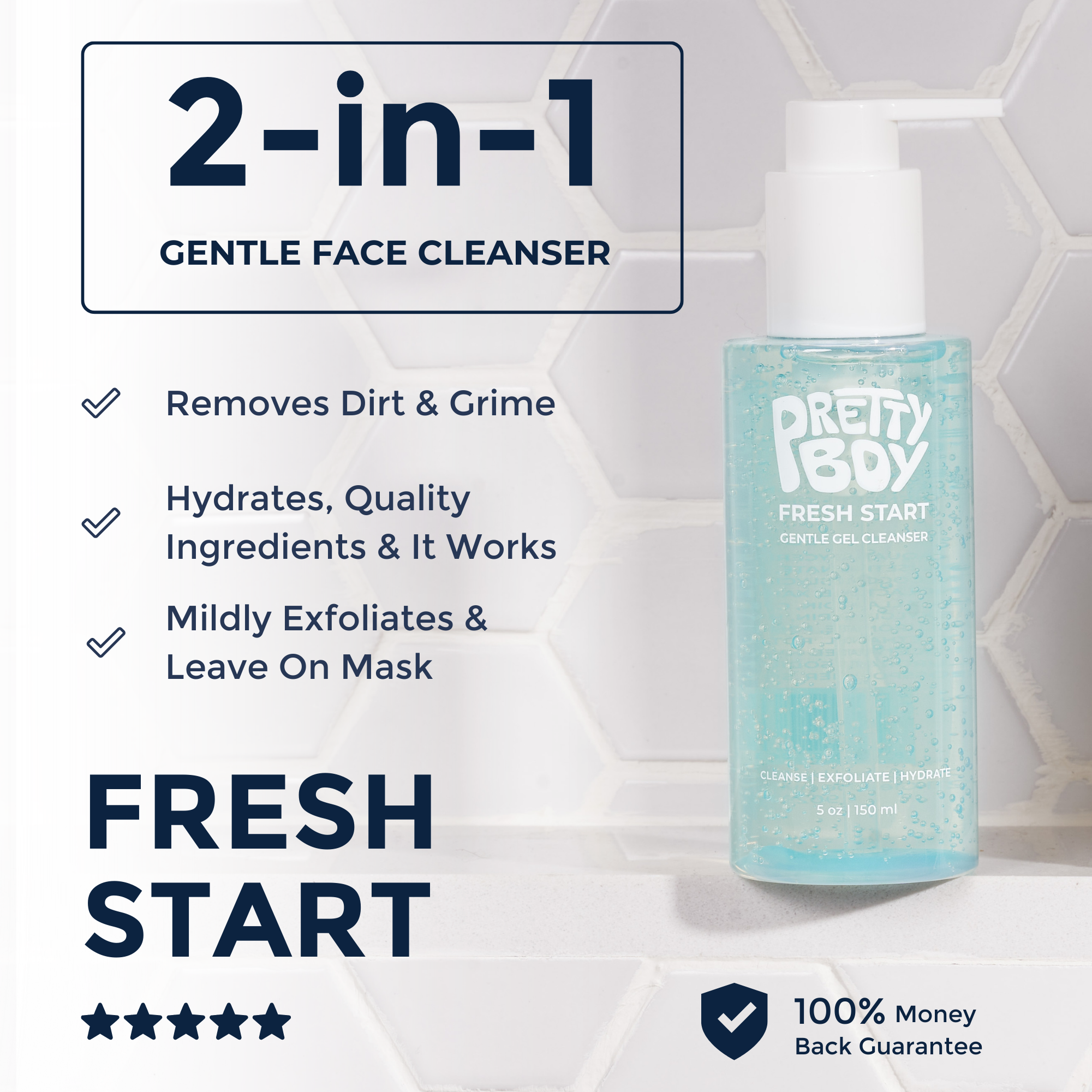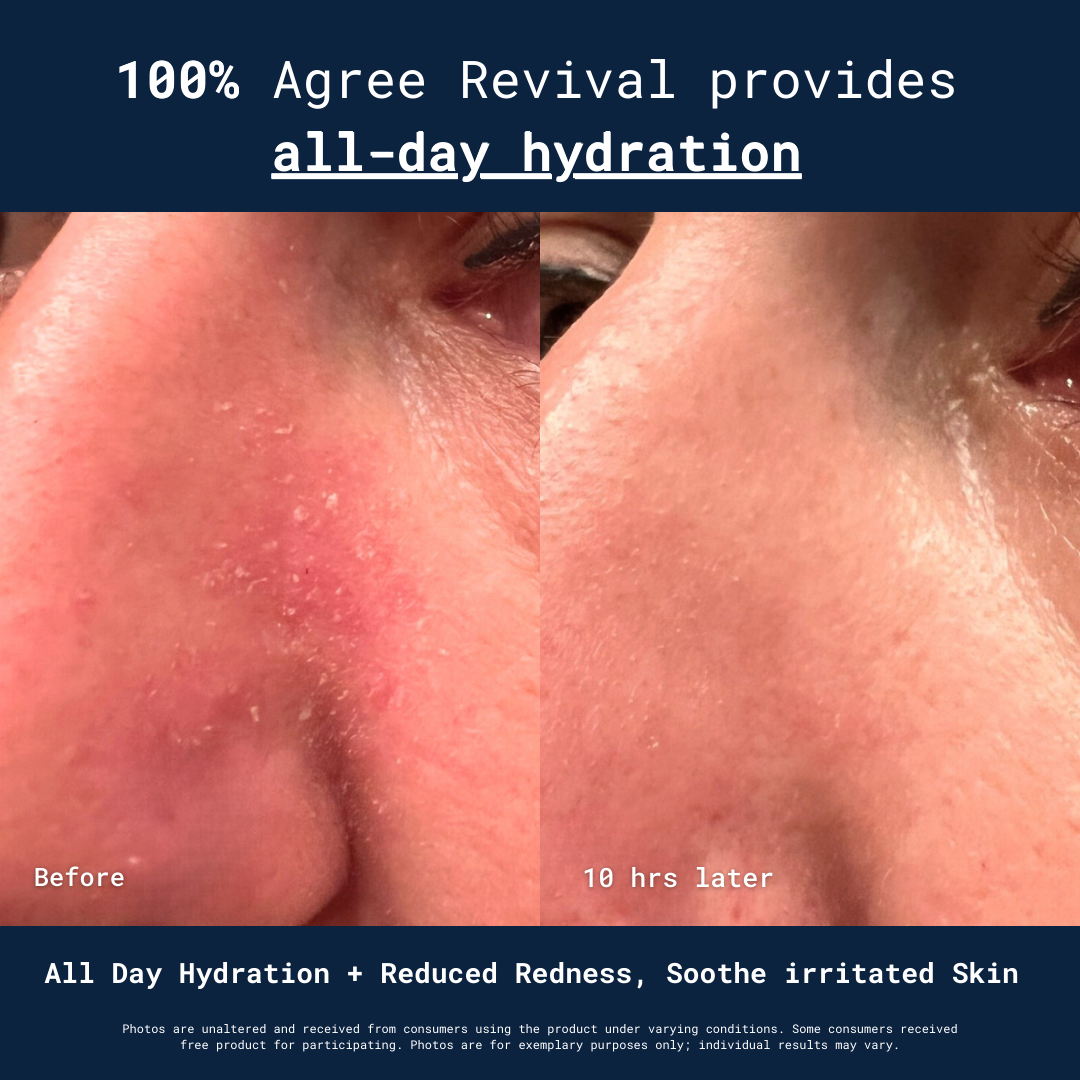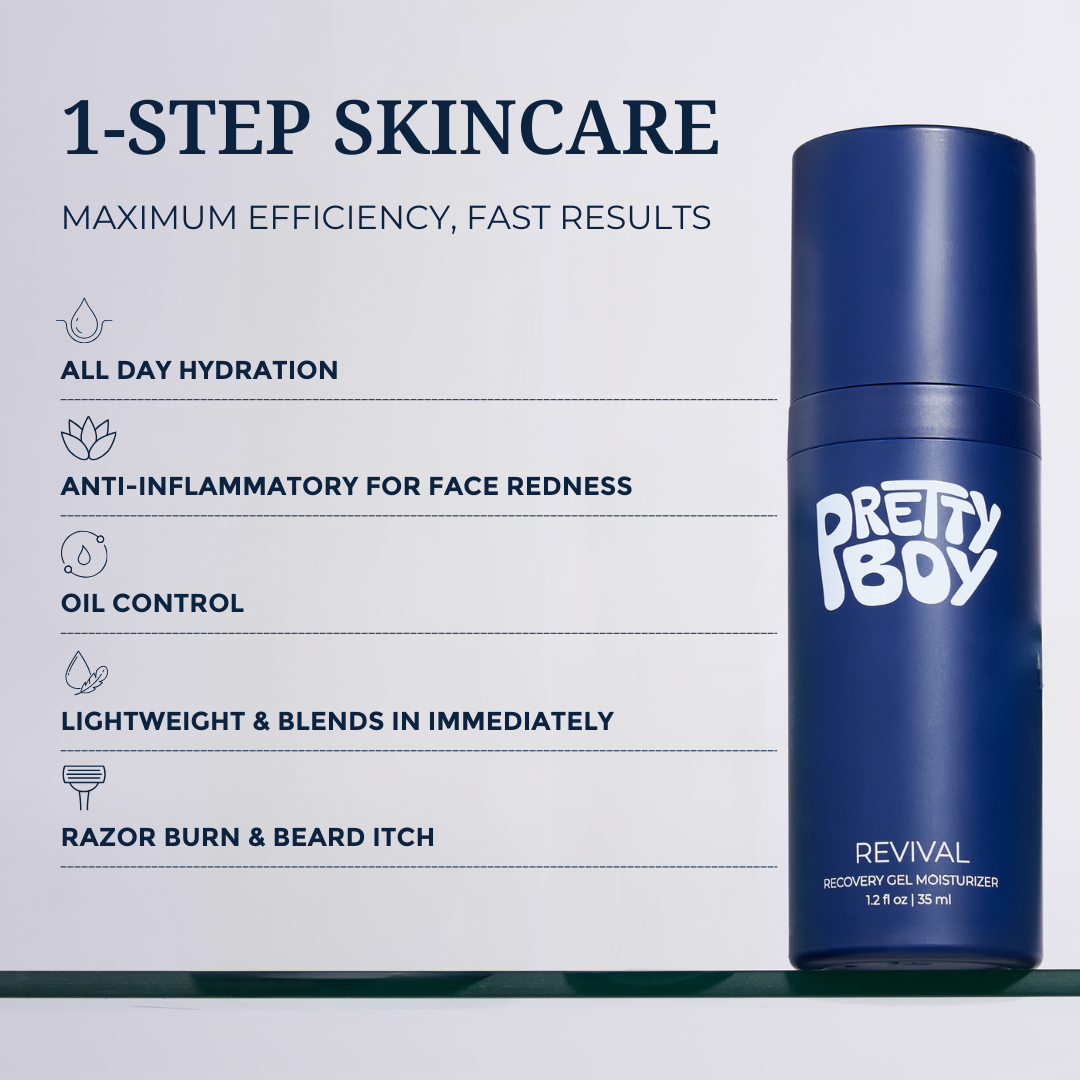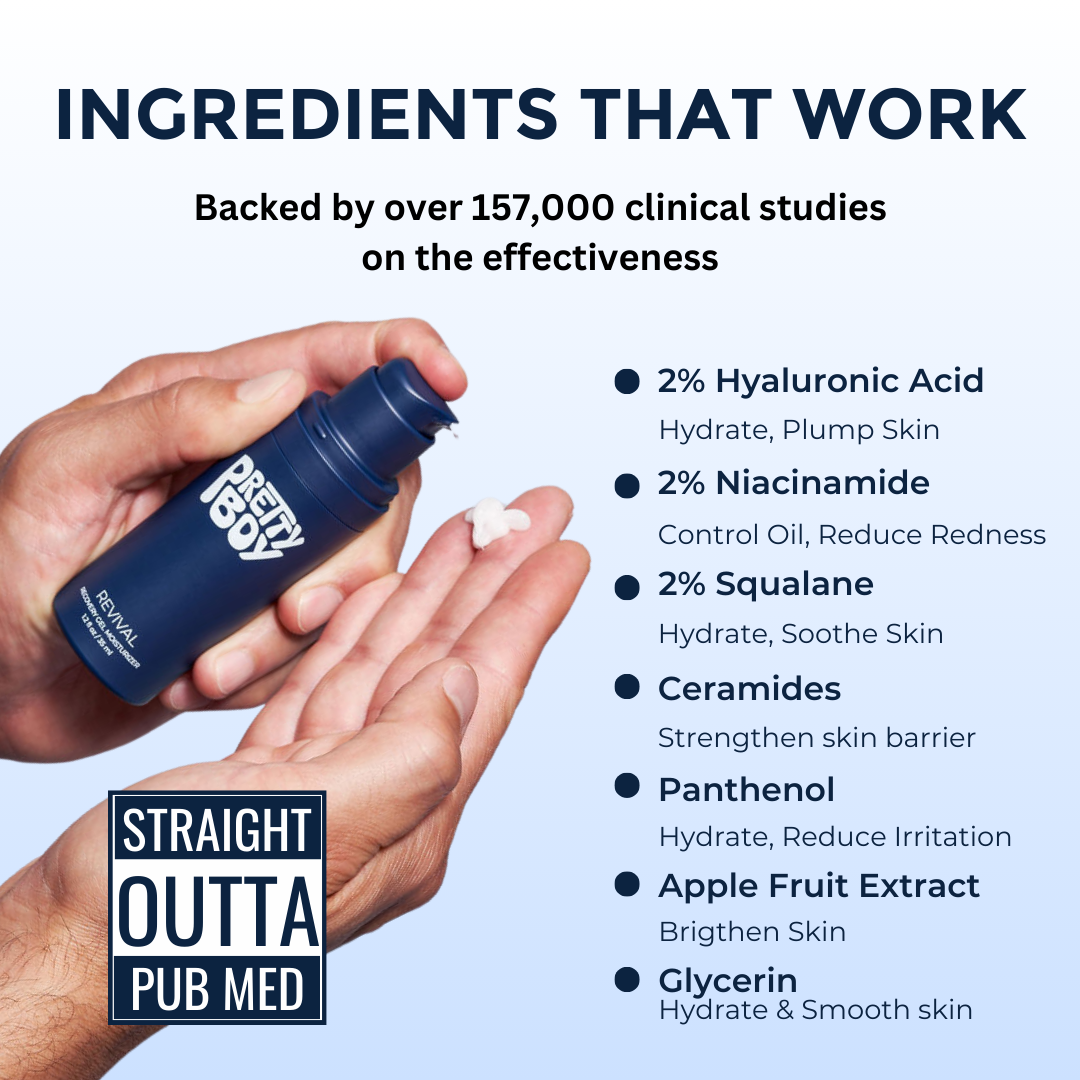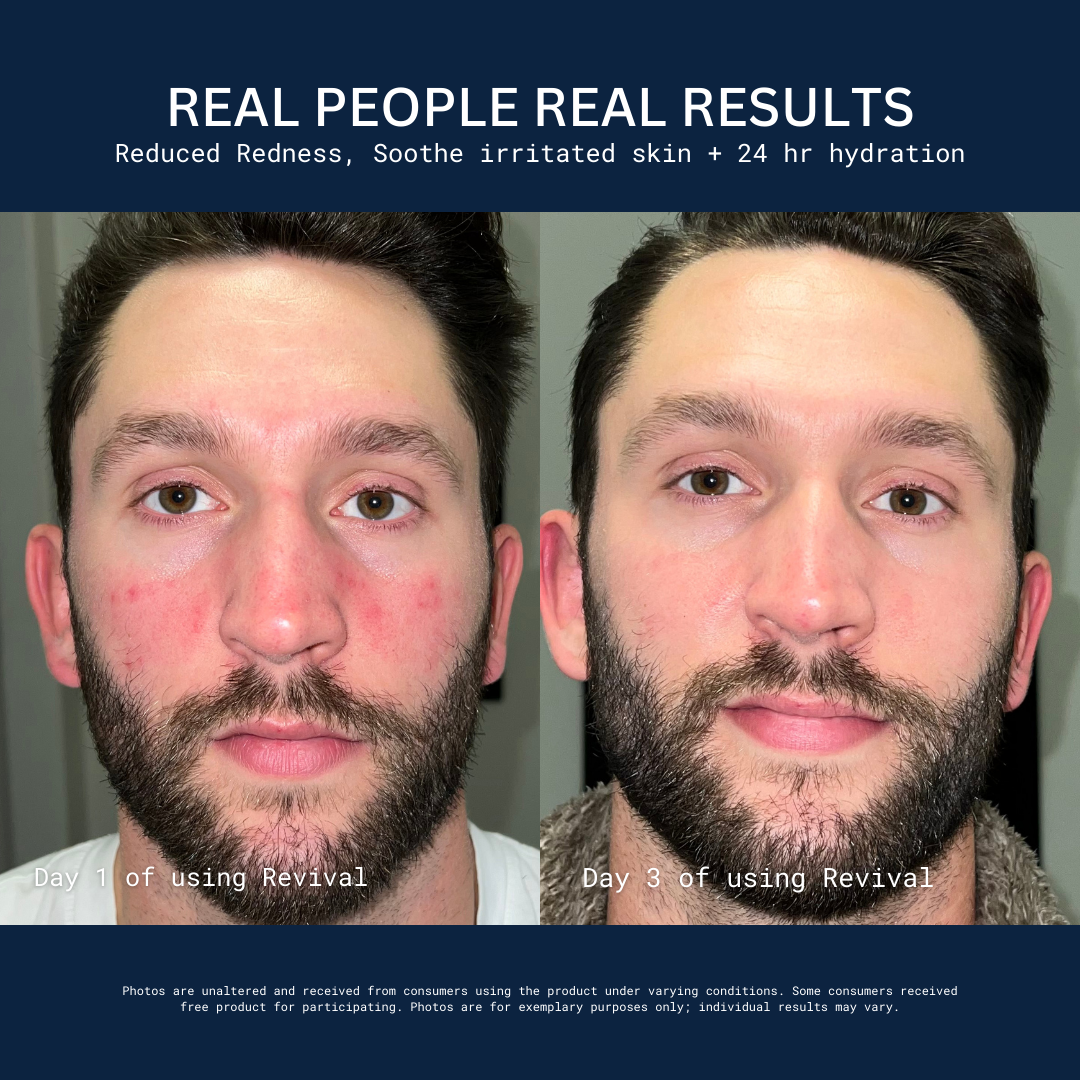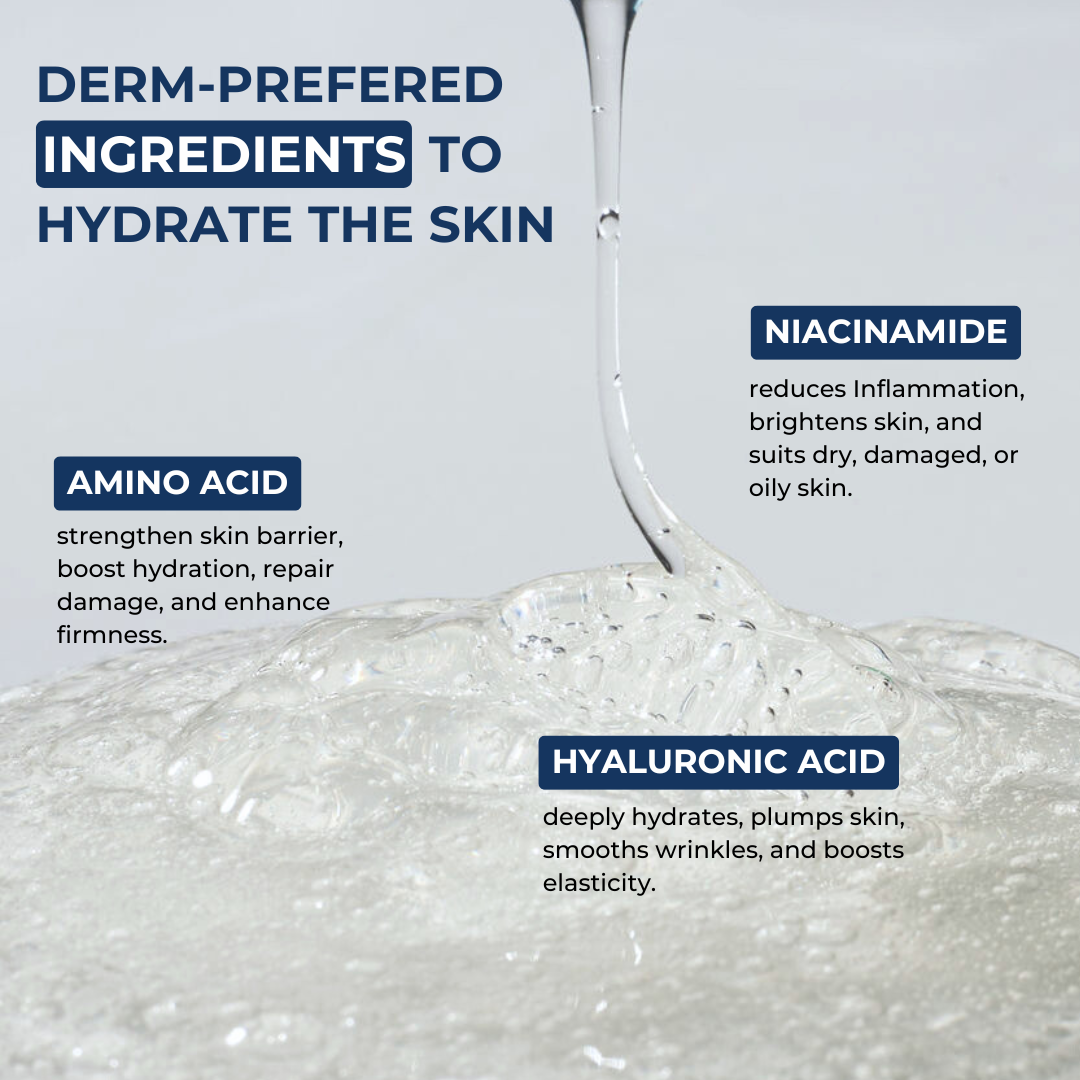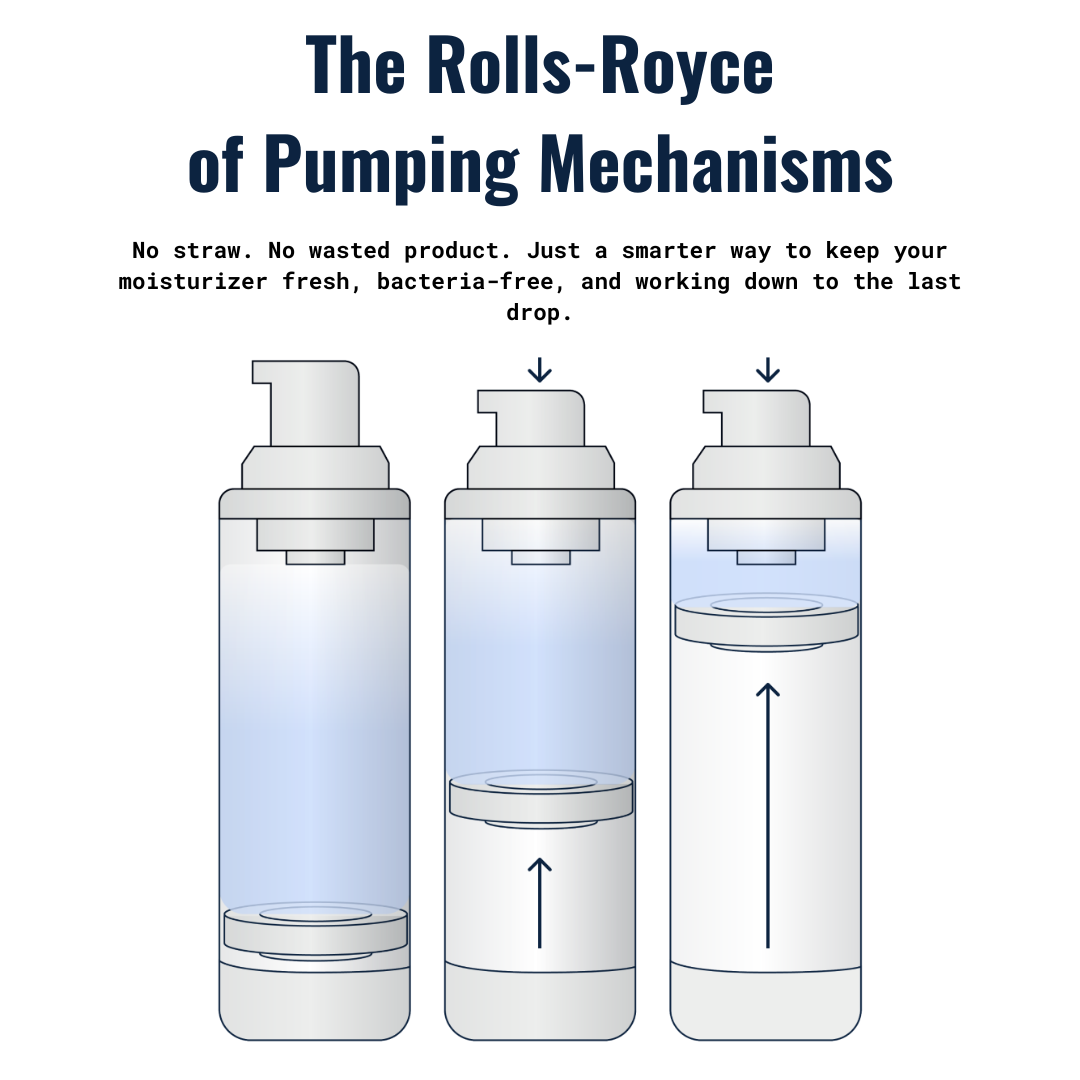Niacinamide naturally reduces skin inflammation and regulates oil production. Hyaluronic acid hydrates the skin, improving the skin’s tone and texture. When combined, these ingredients keep your face fresh and balanced all day.
If you hit up Dr. Google for your skincare questions, you’ve probably stumbled upon two ingredients that are hard to understand and even harder to pronounce: niacinamide and hyaluronic acid.
Both are popular ingredients in men’s face moisturizers—and for good reason. But if you’re reading this, chances are you’re confused about what they do, how they’re different, and how to use them.
Luckily, you don’t need an advanced biology degree to figure this out: Niacinamide hydrates your skin and hyaluronic acid controls oil production. At first, this might seem counterproductive. But as you’re about to learn, these two skincare ingredients are a dynamic duo for your face.
Niacinamide vs. Hyaluronic Acid: What’s the Difference?
Niacinamide (a type of vitamin B3) is a water-soluble vitamin with antioxidant and anti-inflammatory properties. It builds keratin and ceramides: two proteins that strengthen your skin. Niacinamide has also been shown to regulate sebum and oil production.
Hyaluronic acid is a slippery substance found in the fluids of your eyes and joints. It’s a natural lubricant and humectant that improves skin elasticity, reducing the appearance of fine lines and wrinkles. Hyaluronic acid is a sugar molecule that can hold 1,000 times its own weight in water, making it a powerful hydrator.
Niacinamide and hyaluronic acid both keep your skin healthy, hydrated, and strong, but they play different roles. Think of them like the Shaq and Kobe of your skincare routine, opens in a new tab.
Niacinamide Benefits
- Minimizes inflammation and redness from rosacea, opens in a new tab, eczema, acne, and shaving
- Makes skin pores appear smaller
- Protects against DNA damage
- Strengthens skin’s lipid barrier
- Regulates sebum production so your skin doesn’t look greasy
- Protects against sun damage
- Minimizes fine lines and wrinkles
- Decreases oxidative stress
- Prevents acne breakouts
- Fades dark spots, opens in a new tab and promotes even skin tone
Hyaluronic Acid Benefits
- Keeps skin hydrated and prevents moisture loss
- Increases skin elasticity
- Reduces the appearance of fine lines and wrinkles
- Reduces skin redness
- Assist wound healing from razor burn, acne scars, opens in a new tab, and sunburn
Can You Use Niacinamide and Hyaluronic Acid Together?
You can definitely use niacinamide and hyaluronic acid together, regardless of your skin type. They’re complimentary, so you don’t have to worry about ingredients clashing or irritating your skin. In fact, dermatologists often recommend combining them to keep your skin hydrated while also regulating oil production.
When used at the same time, niacinamide and hyaluronic acid work synergistically to strengthen your skin barrier function, maintain adequate hydration, and keep your complexion smooth and bright.
Since niacinamide and hyaluronic acid perform so well together, we included both in our Revival Moisturizer for men. Our formulation combines 2-5% niacinamide and a 2% hyaluronic acid blend into a lightweight, gel-based moisturizer.
Some skincare brands make separate products for niacinamide and hyaluronic acid, but we worked with dermatologists to create the optimum ratios to help you save money (and your face).
How to Use Niacinamide and Hyaluronic Acid Together
The best way to use niacinamide and hyaluronic acid together is in the form of a lightweight, gel-based serum. A lighter formula will penetrate deeper into your skin, allowing the ingredients to work faster and more efficiently.
Ideally, you should apply niacinamide and hyaluronic acid after washing your face in the morning and again before bed.
To get the maximum benefit from these two ingredients, you’ll need about 4% niacinamide and 2% hyaluronic acid. Some skincare products only have a tiny amount in their formulas for the marketing hype. Make sure you check the active ingredient percentages so you don’t get scammed.
Common Questions About Niacinamide and Hyaluronic Acid
Skincare 101 is in session. Here’s your cheat sheet for using niacinamide and hyaluronic acid.
Is Hyaluronic Acid or Niacinamide Better for Hyperpigmentation?
Research suggests niacinamide serums can reduce hyperpigmentation and correct uneven skin tones after four weeks. This is likely due to niacinamide’s ability to increase collagen production.
Is Hyaluronic Acid or Niacinamide Better for Acne?
If you have acne-prone skin or super oily skin, opens in a new tab, niacinamide can reduce the inflammation from breakouts and limit sebum production, preventing further breakouts.
Hyaluronic acid keeps your skin adequately hydrated, which can indirectly help prevent breakouts.
Is It Better to Use Niacinamide or Hyaluronic Acid?
Niacinamide and hyaluronic acid are both ideal if you want healthy, even-toned skin. However, if you’re battling dry skin, hyaluronic acid is your best friend. On the other hand, if you struggle with oily skin, acne, or blemishes, niacinamide will work wonders.
Simplify Your Skincare Routine with PrettyBoy
All the buzz about niacinamide and hyaluronic acid might tempt you to turn your skincare routine, opens in a new tab into a science experiment. But let’s be honest, you need a regimen that’s idiot-proof and effective. That’s why we made Revival: our 6-in-1 moisturizer that reverses signs of aging and quenches your skin’s thirst like a Gatorade on a hot summer day.
Don’t take our word for it though—Forbes and GQ, opens in a new tab both named Revival the best moisturizer for combination skin, opens in a new tab, thanks to our dermatologist-approved formula that blew leading brands out of the water in a blind review.
Grab a bottle and see for yourself why thousands of dudes have ditched their old moisturizer for Shop Revival Moisturizer for men.




